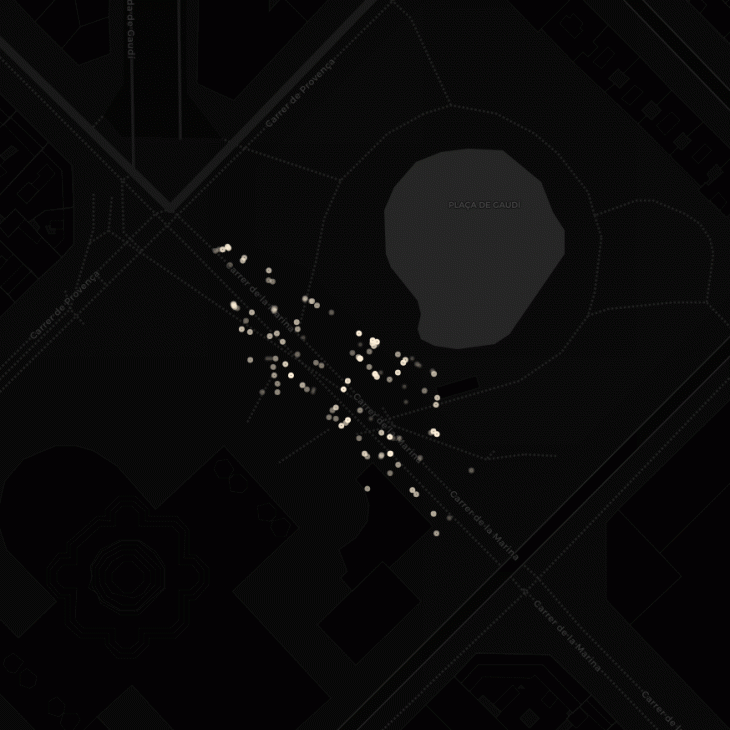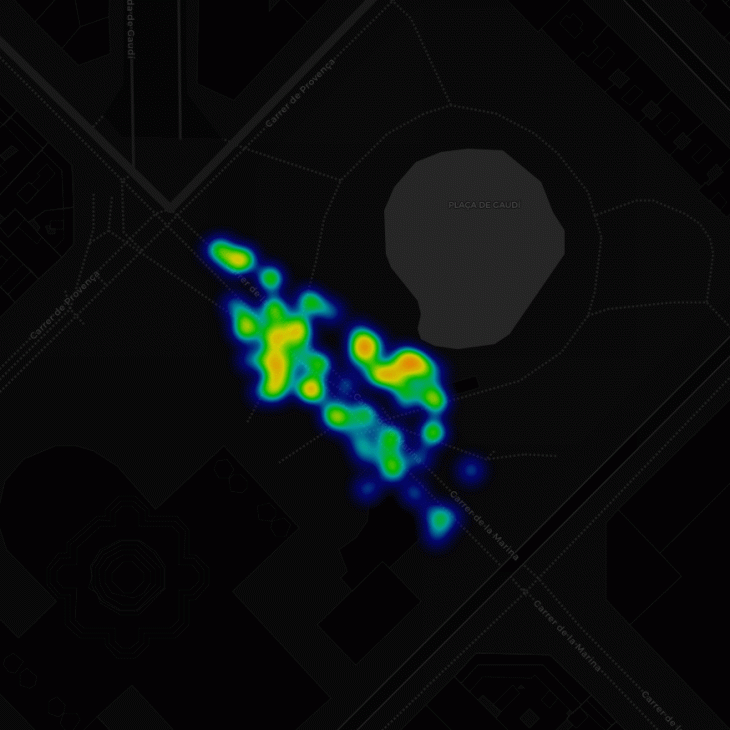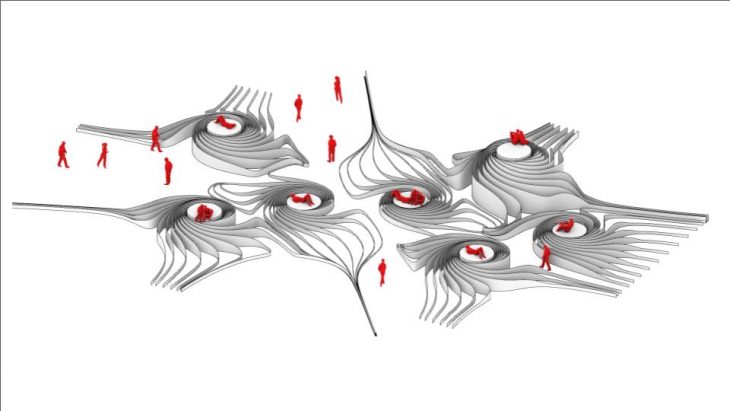The project investigates post-covid19 dynamics between people and popular spaces. And questions whether popular places like La Sagrada Familia or Mercado Santa Caterina are still popular tourist destinations in Barcelona.
Government regulations have limited our accessibility to public space during certain periods of the day causing us to interact differently with the city.
The objective of the project is to analyze the current situation of the places that before COVID-19 were crowded and based on this, draw conclusions on how these spaces could possibly change their role in t11he city. With these conclusions, the design intent is to create urban landscapes near iconic buildings based on movement data of pedestrians.
For this, videos were recorded between 3 to 5 minutes during the time slots allowed by the government: 06:00-10:00 am, 12:00-19:00 pm, 20:00-23:00 pm. A camera was located in the streets adjacent to the Sagrada Familia church and the Santa Caterina market.
In these videos, the movement patterns of people and cyclists are observed. Using Python and by detecting objects through “Yolo”, the number of people and cyclists that pass in these places were detected.


With the generated database, the movements of people were geolocated, mapped and analyzed by using dot maps and heat maps. Further these maps offered us a basis to paint speculative scenarios using parametric design tools.
After analyzing the speed and distance between people and the type of activities detected with ‘Yolo’,a digital for object detection, it was concluded that new urban environments are necessary that work as attractors and that in turn generate multiple activities in these two public spaces studied.

Therefore,magnetic fields were created around the movement patterns of pedestrians, which served as inspiration for urban micro spaces as shown in the figure that could function as urban furniture, recreation areas or simply walkways that manipulates the pedestrian movement.
![]()
Re-Iconic surveillance is a project of IaaC, Institute for Advanced Architecture of Catalonia
developed at Master in Advance Architecture & Master in City and Technology in (2019/2020) by:
Students: Taras Kashko, Frank Feng, Michelle Rodriguez, Akshay Marsute
Faculty: Aldo Sollazzo, Soroush Garivani, Iacopo Neri